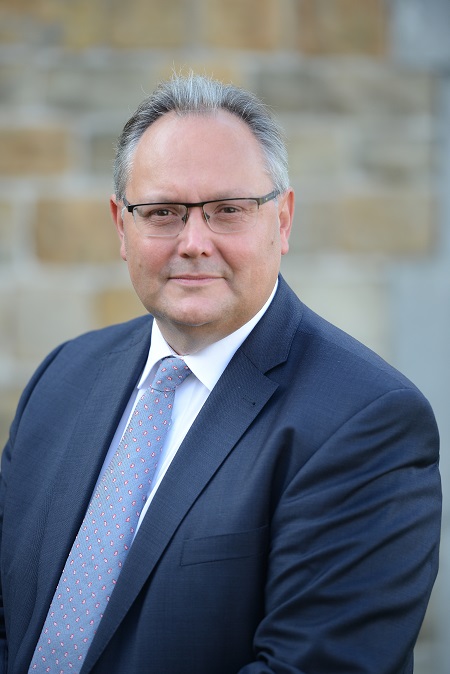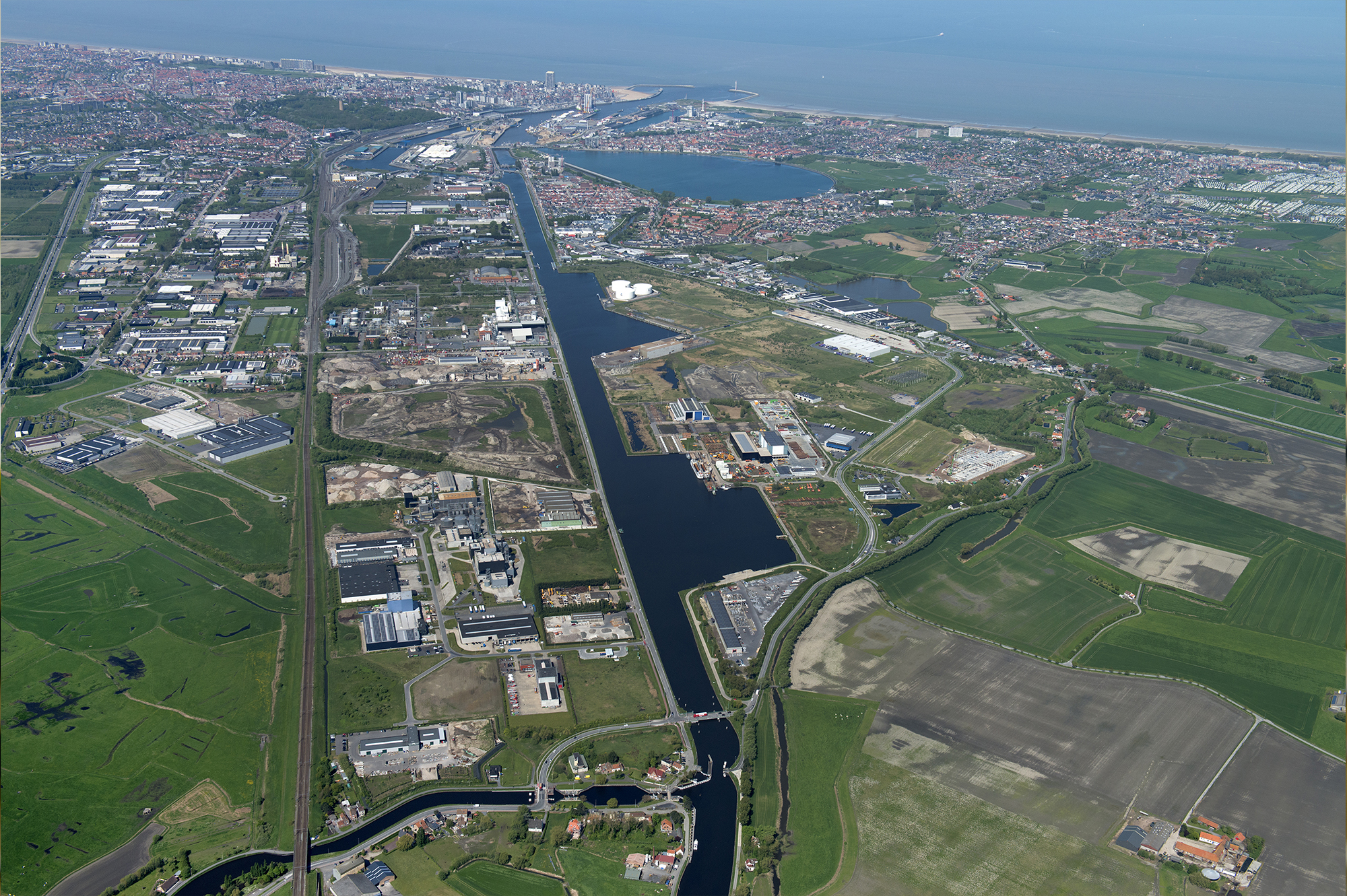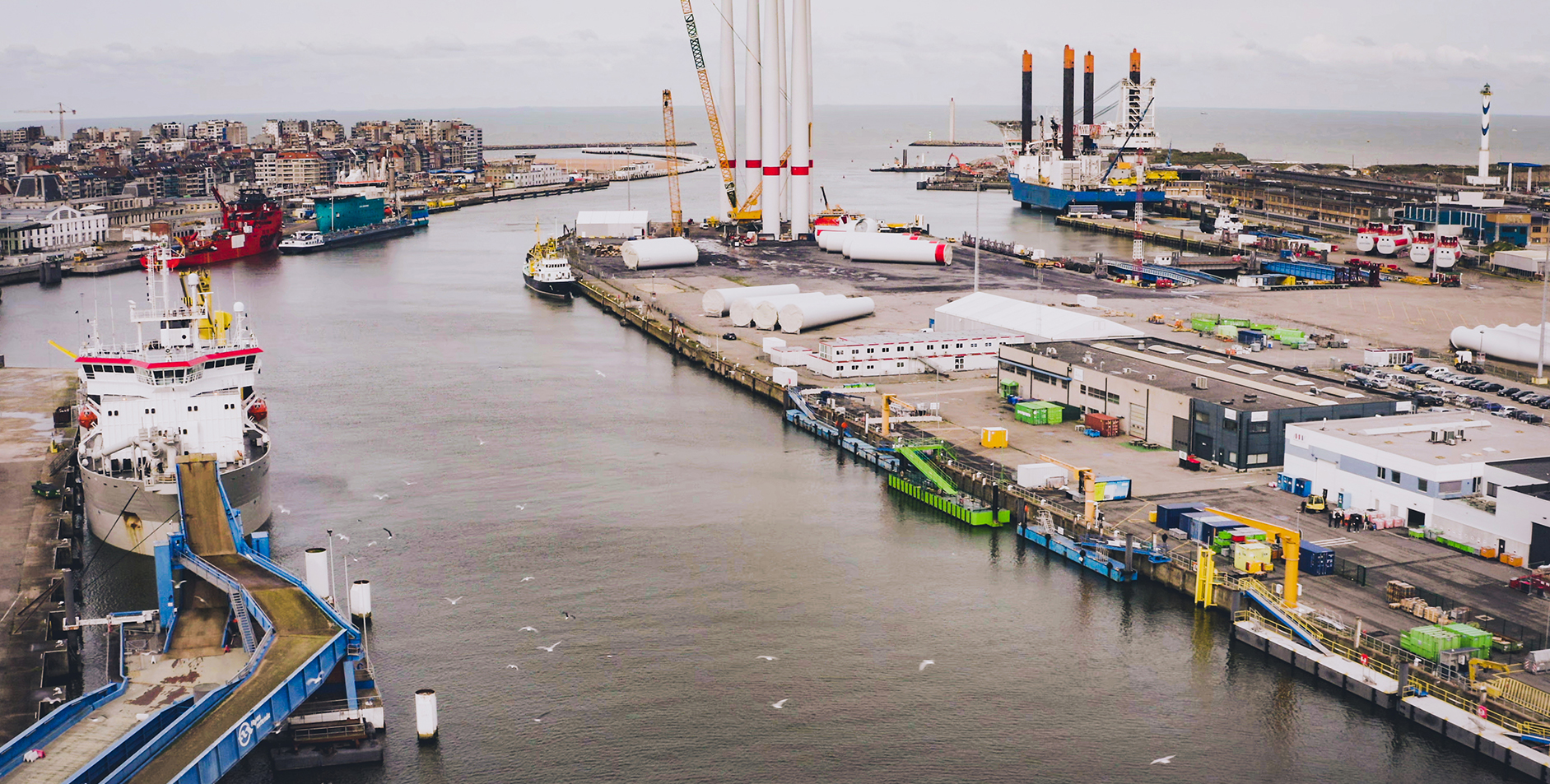31 January 2022
For the first 2022 edition of the Port Pro of the Month, ESPO sits down with Dirk Declerck, CEO of the Port of Oostende. Discover below how he became the CEO of his hometown’s port, his vision for the port, and learn more about his views on the offshore industry, hydrogen and circular economy in the port.

Historically, Port Oostende was one of the main connecting points between the UK and the European mainland. Gradually Ostend changed its profile. Do you see a need to re-start this connectivity?
For over 150 years, Port Oostende was indeed a connection between Ostend and various ports in the UK. For many decades, it was the main connection between the continent and the UK. There is a particular reason for this; Ostend is very well located for reaching the United Kingdom using the short shipping route. The fact that this connection was lost in 2013 does not mean that there is no economic viability for roll-on roll-off or a ferry, on the contrary. We believe that there certainly is, without even going into competition with other Flemish ports, an opportunity to re-establish this line. One of the five pillars of Port Oostende is roll-on roll-off and ferries. We have established an elaborate investment programme to make us ready to enter this market again on the short term.
What is your long-term vision for Port Oostende?
I believe it was Michael Porter who said: “If all you’re trying to do is essentially the same thing as your rivals, then it’s unlikely that you’ll be very successful”. First thing of course is to know who your competitors are and especially who are not. Having had the opportunity to work in the Port of Antwerp (now the Port of Antwerp-Bruges) and in the Port of Ghent, it was easy for me to realise that we should not compete with those great ports and that we should make sure that we are great in other markets of the future.
Therefore, we defined our mission as: “Creating economic maritime growth with sustainable employment”. Our vision was defined in 2019 and we should realise this mission by excelling in maritime sustainable growth markets where we can be top of the class. We create added value in five sectors: Blue Economy, Bulk & Project Cargo, Roll-On Roll-Off & Ferries, Circular Industry, and the Fisheries Sector. In each of these sectors we focus on specific activities.

Many European ports are not only logistic hubs anymore, but increasingly play a role as energy hub. The offshore industry plays an important role in Port Oostende. Which kind of offshore industry activities exist in the port? Why is the offshore industry so prominently present in Port Oostende?
Port Oostende is indeed a main port in the southern part of the North Sea when it comes to offshore wind industry. Many wind turbine parks have been built starting from the REBO (Renewably Energy Base Oostende) terminal which has been fully owned by Port Oostende since October 2019. A heavy weight terminal of 16 hectares with a reinforced quay and a gravel bed has proved to be extremely useful for this purpose. The location and the infrastructure enabled companies to build these wind turbine parks from Port Oostende and indeed a cluster of more than 60 companies active in maintenance and operations related to offshore wind are now active in Ostend. We are ready to accommodate the construction of other windfarms in the future and in the meantime our heavy weight terminal can be used for decommissioning, break bulk and the construction of heavy equipment.
Offshore wind, as part of blue energy, is very important and we are now looking at the next phase with floating solar panels, hydrogen, and other sources of renewable energy.
We strongly believe in the triple helix model where the efforts of the government, companies and education combined lead to common success. Therefore, we thank all the companies that chose Port Oostende as their location, and where possible, we improve education within the blue economy. Port Oostende takes various initiatives on this subject.
.jpg)
Port Oostende is also actively preparing for the arrival of the hydrogen economy. Can you briefly tell us more about your plans to develop the hydrogen industry in the port? Do you believe hydrogen will become a global energy commodity in the future?
Although I have graduated in petrochemistry, I have a great passion for hydrogen. In fact, in the early 90’s I studied the use of hydrogen and its applications in mobility. In 1989 my professor in petrochemistry taught me that the global crude oil reserve was 30 years and he was right. But I think it is indeed still 30 years or more (smiles).
Having said that, it is my strong belief that fossil materials should be used with the greatest care and preferably only for those applications where there are no alternatives. For transport applications there are ample alternatives, hydrogen is one of them. The use of hydrogen or electricity for transport can contribute significantly to the air quality in cities. This comes down again to one of the pillars of Port Oostende: the care for safety and environment.
Besides, when using renewable energy producing electricity or hydrogen, it undoubtedly reduces CO2 emissions. Hydrogen, together with the production of renewable energy, is the path forward and is essential in the era of energy transition we are currently in. It is exciting! Port Oostende makes various efforts for the production and distribution of hydrogen. In fact, some initiatives will soon become clear and I will be happy to tell you more about them when we have all signatures.
Port Oostende accommodates a business cluster that is active in the circular economy. How is this business evolving? Do you foresee this business growing in the future?
Besides the cluster of blue economy which in the meantime entails more than 60 companies, Port Oostende has also created a cluster in circular industry since the beginning of 2019. By creating such a cluster, we believe that we support those companies. What is waste for one company, can be raw material for another company. What is excess energy for one company, can be used for another. The companies that are part of such a cluster benefit from that cluster and it binds these companies to Port Oostende, thus creating sustainable employment. It is a win-win-win situation for the companies, the employees, and the port. Ports like Port Oostende can certainly play an active role as a facilitator and as a catalyst for economic growth.

Over the years, Port Oostende has been very actively participating in different European projects. What has been the added value of participating in such projects? Can you give us two examples?
Port Oostende is happy to be the hometown of the Belgian Offshore Cluster, which we support. Also, we are a strategic partner of the Blue Cluster which is an independent and neutral organisation that supports companies operating in blue economy. It is one of the 7 spearhead clusters in Flanders. Moreover, Port Oostende is a founding member of the Offshore Wind Ports Platform, which unites European Ports active in offshore wind.
The best way to achieve a goal and to have fast learning progress and improvement is by sharing common experiences. We are not afraid to share our expertise with other ports as we are also happy to learn from them. This is one of the positive effects of participating in European projects.
The COVID-19 crisis is having a profound impact on the European economy and society. What has been the impact of this crisis on Port Oostende?
By 2019 we had shifted from declining volumes towards significant growth. We felt the impact of COVID-19 as we observed decreased tonnage in 2020 and 2021. It is thanks to the trend that was changed in 2019 that we were able to cope with that. Meaning that the increase came to a standstill, but overall, there was no major financial impact. On the contrary, due to the growth realised and the increased number of concessions, 2020 was the best financial year for 15 years. 2021 is even slightly better than 2020. Having said that, we are convinced that from 2022 onwards we can pick up the growth in tonnage again. We expect this will be realised rapidly.
 © Kim Vlaeminck
© Kim Vlaeminck
Can you describe Port Oostende’s main safety and environmental priorities?
As mentioned, we have one mission, one vision, and a strategy with five pillars, but all of this cannot be established without two solid foundations. The first foundation is prioritizing safety, health and environment. Salus populi suprema lex esto. The health and welfare of the people should be the most important law. This is my credo and I believe the care for safety of people and environment should be the priority of every CEO and manager. We have introduced that in Port Oostende when I started as CEO. Caring for our people and for the environment is the legacy we want to promote.
Whilst some people might still think that spending money in safety and environmental care is a cost, it should be clear that safety is not a cost but an utmost important investment to ensure the continuity of every company. As we give concessions for terrains, which is of course only one of our activities, we are responsible for the environment. We believe however that as a port we should not only act as a supervising institution but also actively promote caring for safety, health and environment within the port and its companies.
The second foundation is the support to research, incubation, development and innovation.
How did you get into the port environment? How did your career path lead to this position?
In 1990 I graduated as a master in chemical engineering, with a specialisation in petrochemistry. At that moment, it was my dream to start working on an oil drilling offshore platform. Looking backwards, I was very lucky to start working as a surveyor for a private company in the Port of Antwerp. It gave me the opportunity to see every compartment, every tank, engine room etc. of maritime vessels and gave me insight in maritime logistics. Ever since, the ports and maritime business bug has remained in me. It is great! I took the opportunity to work hard and to study various aspects of the industry whenever I could. I was lucky to have, during my career, various CEOs who noticed my efforts and results.
This is something I have learnt: one of the most important assets of a company are the people working for the company. A good CEO must be able to notice those people who contribute most in the company and empower those people in their respective careers. I have worked for private companies in the Port of Antwerp for 15 years, 7 years as a managing director for a chemical Seveso company in the port of Ghent, 2 years in the Port of Rotterdam and did various assignments in other ports across the globe.
After 25 years in the maritime industry, I had the opportunity to become CEO of the Port in my hometown. Of the 21 fellow engineers from West-Flanders that graduated with me, no one found work in Ostend at that time. It might have been that we were simply not good enough (smiles) or that there was simply no work. Now, wherever possible, Port Oostende creates added value and maritime employment. This is exactly the mission statement of Port Oostende.
Related documents
No attachments.
